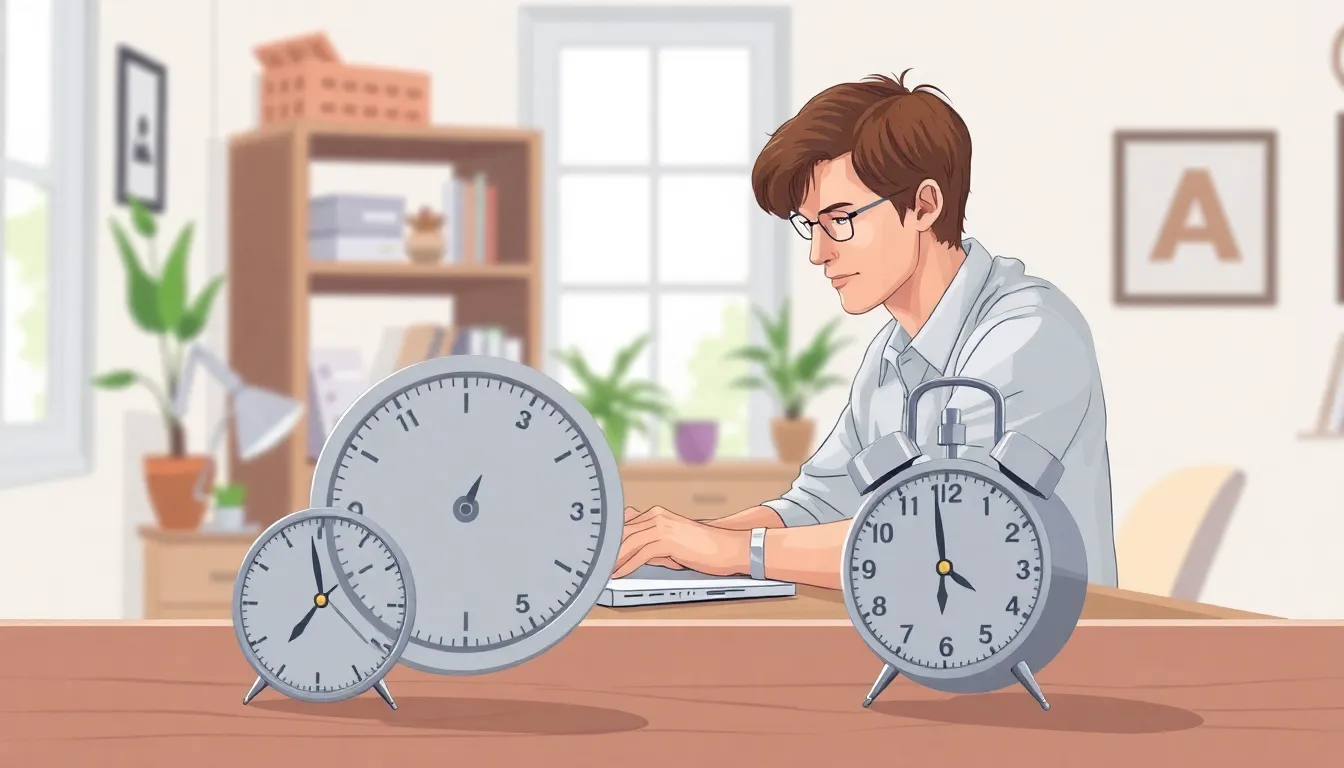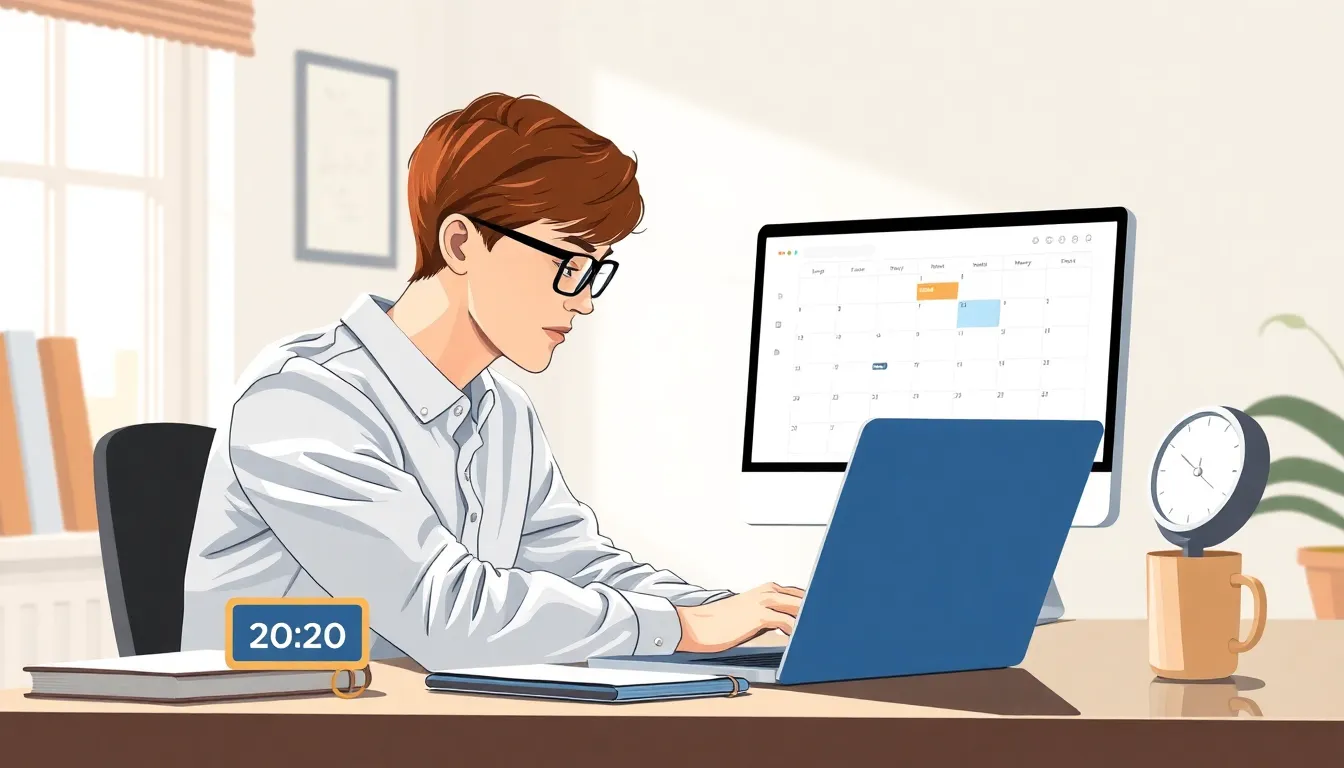For those navigating the whirlwind of ADHD, staying productive can feel like trying to herd cats on a caffeine high. The struggle is real, but it doesn’t have to be a daily battle. With the right hacks in place, turning chaos into creativity is not just a dream—it’s totally doable.
Table of Contents
ToggleUnderstanding ADHD and Productivity
ADHD affects how individuals process information and manage tasks. Recognizing its nature helps in crafting effective productivity strategies.
What is ADHD?
ADHD stands for Attention-Deficit/Hyperactivity Disorder. This neurodevelopmental disorder affects behavior, impulse control, and attention. Symptoms vary but often include inattention, hyperactivity, and impulsiveness. Diagnosis typically occurs during childhood but can persist into adulthood, revealing distinct challenges in focus and organization. Consequently, individuals with ADHD often require tailored approaches to manage daily tasks effectively.
The Impact of ADHD on Daily Life
ADHD significantly influences everyday experiences. Disorganization frequently leads to missed deadlines, causing stress and frustration. Relationships often suffer due to impulsivity or difficulty in maintaining attention during conversations. Managing finances can also become a challenge, with bills going unpaid or budgets overlooked. Furthermore, individuals may struggle with self-regulation, impacting their ability to start and finish projects efficiently. By understanding these challenges, one can implement targeted strategies to enhance productivity.
Effective Time Management Strategies


Implementing effective time management strategies significantly boosts productivity for individuals with ADHD. Two methods stand out: the Pomodoro Technique and time blocking.
The Pomodoro Technique
The Pomodoro Technique enhances focus through structured work intervals. Individuals can work for 25 minutes, then take a 5-minute break. After completing four cycles, a longer break of 15 to 30 minutes follows. This method encourages sustained attention and minimizes burnout. Researchers find that short bursts of productivity maximize focus, making tasks feel less daunting. Many individuals report feeling accomplished and motivated after completing each interval.
Time Blocking for Success
Time blocking organizes the day into specific segments dedicated to tasks. Individuals assign blocks for focused work, meetings, and breaks. Using a digital calendar helps visualize these time slots. Assigning distinct tasks to each block reduces distractions significantly. Experts suggest prioritizing high-energy times for challenging tasks. A clear schedule allows individuals to approach their day with clarity and purpose, fostering greater productivity. Keeping the blocks flexible accommodates unexpected interruptions, ensuring tasks remain manageable.
Organization Tips for Better Focus
Creating an organized environment can significantly improve focus for individuals with ADHD. Implementing simple strategies fosters productivity and helps manage distractions.
Decluttering Your Workspace
Decluttering the workspace promotes clarity. Remove unnecessary items, keeping only essentials within reach. Organizing supplies using storage solutions reduces visual distractions. Labels on bins and shelves make locating items easier. Arranging the desk to minimize clutter encourages a sense of control. Individuals benefit from maintaining a clean space regularly, ensuring smooth functioning throughout the day.
Utilizing Digital Tools
Utilizing digital tools streamlines task management for individuals with ADHD. Employing apps like Trello or Todoist helps track tasks visually. Setting reminders for important deadlines ensures nothing slips through the cracks. Calendar applications enhance scheduling, allowing color-coded events for better organization. Implementing note-taking apps like Evernote aids in capturing ideas immediately. Integrating these digital resources creates a structured environment that supports focus and productivity.
Mindfulness and Mental Health
Mindfulness significantly enhances productivity for individuals with ADHD. Practicing mindfulness encourages awareness of thoughts and feelings, thereby promoting focus and reducing distractions. It fosters a sense of control over impulses. Techniques like deep breathing and meditation cultivate this awareness, allowing individuals to redirect their attention effectively.
The Role of Mindfulness in Productivity
Mindfulness practices enhance focus while minimizing impulsivity. Engaging regularly in mindful activities leads to improved task management. Research shows that individuals with ADHD experience better emotional regulation when practicing mindfulness. Engaging in mindfulness exercises for as little as 10 minutes a day yields noticeable improvements in concentration and stress management. Clear awareness of the present moment reduces the tendency to become overwhelmed by distractions, making productivity more attainable.
Techniques for Reducing Stress
Implementing effective stress-reduction techniques proves beneficial for individuals with ADHD. Deep breathing exercises promote relaxation and help stabilize emotions. Regular physical activity, such as walking or yoga, increases endorphins that alleviate anxiety. Another technique is progressive muscle relaxation, which involves tensing and relaxing different muscle groups to reduce tension. Mindfulness apps also serve as valuable resources, offering guided meditations and calming exercises. Creating a structured daily routine provides additional stability, reducing stress levels associated with unpredictability.
Leveraging Breaks for Enhanced Efficiency
Taking breaks enhances overall productivity, especially for individuals with ADHD. Short, strategic pauses during work stimulate the brain and reduce fatigue.
Importance of Short Breaks
Research shows that short breaks significantly improve focus and creativity. They interrupt prolonged periods of concentration, allowing the brain to reset. Without these intervals, mental fatigue can result in decreased performance and increased frustration. Individuals can use techniques like the Pomodoro Technique, which emphasizes 5-minute breaks after 25-minute work sessions, to maximize efficiency. This approach promotes sustained attention, making it easier to maintain productivity throughout the day.
Fun Activities to Recharge
Engaging in enjoyable activities during breaks fosters re-energization. Options include going for a brief walk outside, enjoying a favorite song, or practicing a quick breathing exercise. These activities allow individuals to disconnect from work and reduce stress. Social interactions, even brief chats with colleagues, can also improve mood and motivation. Incorporating a variety of these fun activities into breaks creates a refreshing routine, enhancing focus when returning to tasks.





